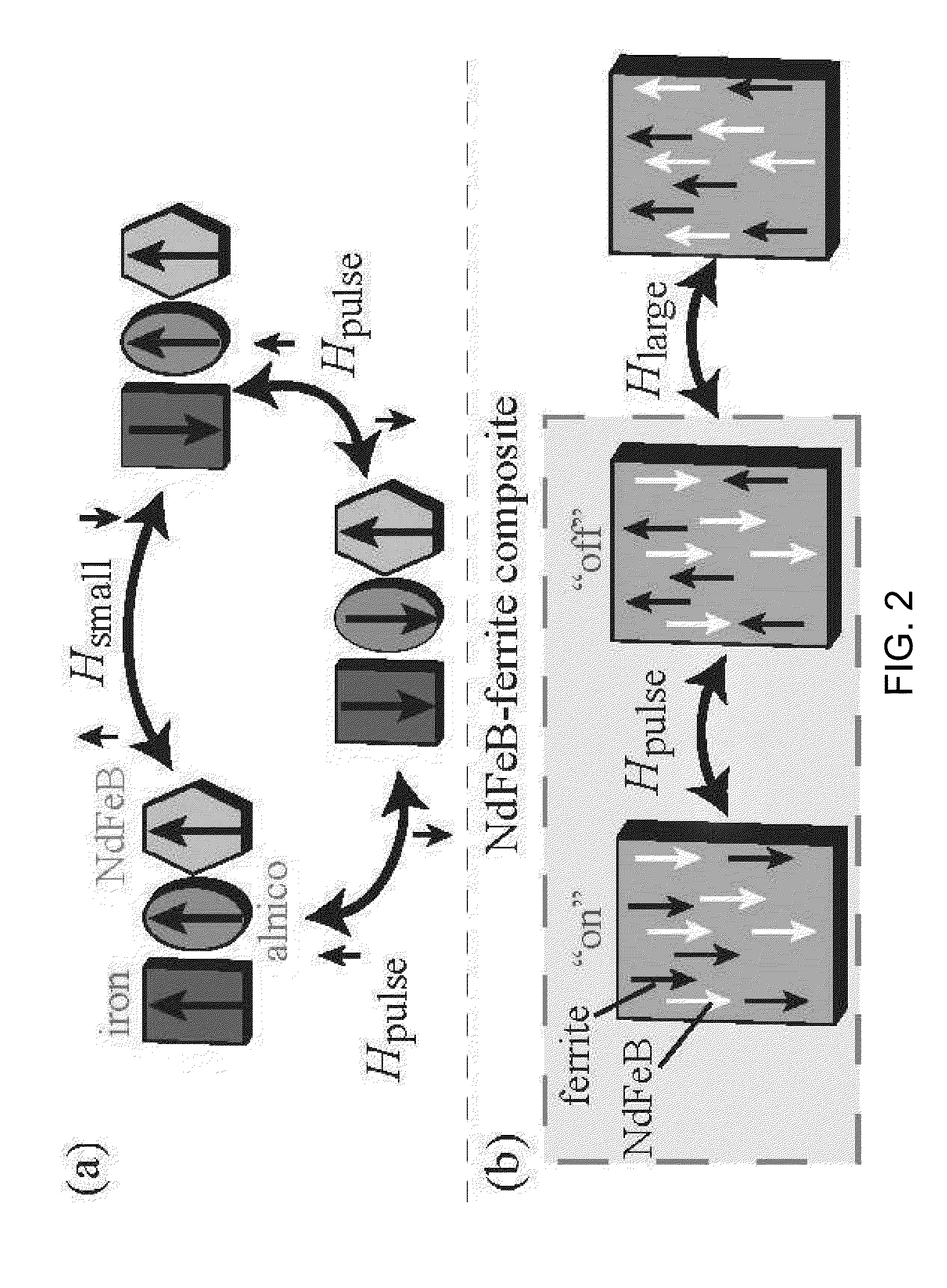Remotely addressable magnetic composite micro-actuators
a magnetic composite and micro-actuator technology, applied in the field of micro-actuators, can solve the problem of unsolved challenges such as the inability to independently address multiple generic magnetic devices which share the same workspace in enclosed environments, such as microfluidic channels or even the human body
- Summary
- Abstract
- Description
- Claims
- Application Information
AI Technical Summary
Benefits of technology
Problems solved by technology
Method used
Image
Examples
Embodiment Construction
[0034]The present invention describes systems, methods and apparatuses for micro-actuators that can be remotely controlled in an addressable manner, and methods to provide remote control such micro-actuators. The micro-actuators are composites of two permanent magnet materials, one of which is has high coercivity, and the other of which switches magnetization direction by applied fields. By switching the second material's magnetization direction, the two magnets either work together or cancel each other, resulting in distinct “on” and “off” behavior of the devices. The device can be switched “on” or “off” remotely using a field pulse of short duration. As a possible alternative embodiment of the presented addressable actuation scheme, any set of magnetically-actuated micro-devices could be addressably controlled. This could be used for controlling many untethered magnetic micro-robots, micro-fluidic valves and mixers, remote mobile micro-sensors, or tools in a capsule endoscope. In ...
PUM
| Property | Measurement | Unit |
|---|---|---|
| magnetization | aaaaa | aaaaa |
| magnetization | aaaaa | aaaaa |
| magnetization | aaaaa | aaaaa |
Abstract
Description
Claims
Application Information
 Login to View More
Login to View More - R&D
- Intellectual Property
- Life Sciences
- Materials
- Tech Scout
- Unparalleled Data Quality
- Higher Quality Content
- 60% Fewer Hallucinations
Browse by: Latest US Patents, China's latest patents, Technical Efficacy Thesaurus, Application Domain, Technology Topic, Popular Technical Reports.
© 2025 PatSnap. All rights reserved.Legal|Privacy policy|Modern Slavery Act Transparency Statement|Sitemap|About US| Contact US: help@patsnap.com



